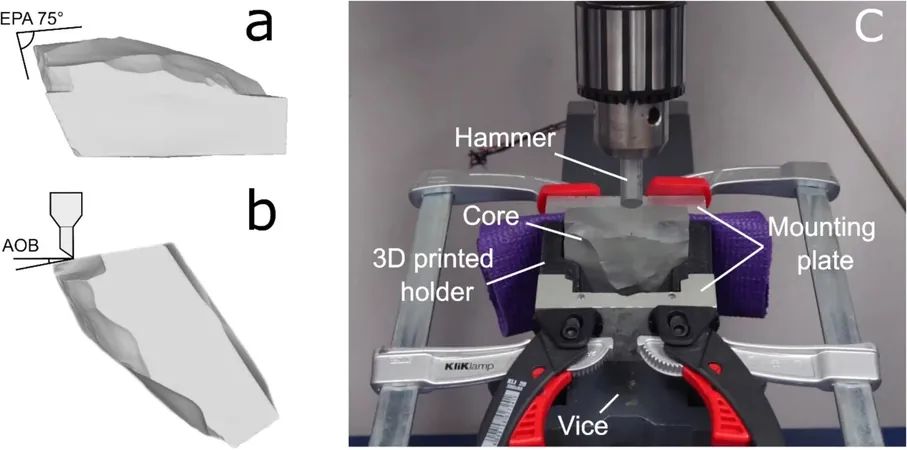
Revolutionary Insights: Neanderthal Stone Knappers Show Unprecedented Intelligence!
2025-05-06
Author: Ming
Neanderthals: Master Tool Makers?
A groundbreaking study from researchers at the University of Wollongong has unveiled the extraordinary cognitive skills of Neanderthals, challenging long-held notions about their tool-making abilities. Recent experiments have demonstrated that the angle at which Neanderthals struck their tools significantly influenced the form and fracture of stone flakes, revealing a level of intelligence and planning previously underestimated.
The Game-Changing Findings
Published in *Archaeological and Anthropological Sciences*, these findings debunk a prevailing model that suggested flake production was primarily dictated by the physical characteristics of the rock cores. Instead, the results indicate that these early Homo sapiens exhibited remarkable foresight and adaptability in their knapping techniques.
What is the Levallois Technique?
The Levallois method, a sophisticated stone tool technology first emerging between 200,000 and 400,000 years ago, involved meticulous core preparation aimed at producing specific flake sizes. This technique marks a high point in Neanderthal innovation, with evidence suggesting it remained consistent for over 100,000 years, possibly hinting at complex social structures and communication skills among these ancient humans.
The Experiment: A Close Look at Hammer Angles
In their study titled "Controlling Levallois: the effect of hammer angle of blow on Levallois flake morphology and fracture trajectory," the researchers conducted a meticulous experiment using standardized glass cores to mimic the Levallois style. They meticulously tested hammer strikes at angles of 0°, 10°, and 20°, measuring how these variations affected flake size, weight, and fracture patterns.
Striking Results!
The findings were illuminating: flakes struck at lower angles were consistently larger, thicker, and heavier, while those struck at higher angles were narrower and shorter. This suggests that Neanderthals were not just randomly striking rocks; they were applying deliberate techniques tailored to achieve desired results in their tools.
Implications for Our Understanding of Early Human Cognition
This research highlights that Neanderthal tool production was a complex interplay of physical skill and cognitive planning. The ability to adjust strike angles based on desired flake outcomes suggests a sophisticated understanding of material properties and an ability to weigh risks against benefits during tool-making.
A Broader Perspective on Human Evolution
These revelations not only enrich our understanding of Neanderthal capabilities but also expand the narrative of early human cognition. By revealing a behavioral repertoire that includes decision-making, spatial awareness, and motor control, this study reshapes prior models of human development.
Conclusion: Neanderthals Redefining Intelligence
In exploring the intricacies of Neanderthal tool-making, this pivotal research paints a picture of an intelligent and adaptive species that was far more than a primitive branch of humanity. Their skillful manipulation of technology speaks volumes about their intellect and ingenuity, challenging us to reconsider our views on what it means to be human.



 Brasil (PT)
Brasil (PT)
 Canada (EN)
Canada (EN)
 Chile (ES)
Chile (ES)
 Česko (CS)
Česko (CS)
 대한민국 (KO)
대한민국 (KO)
 España (ES)
España (ES)
 France (FR)
France (FR)
 Hong Kong (EN)
Hong Kong (EN)
 Italia (IT)
Italia (IT)
 日本 (JA)
日本 (JA)
 Magyarország (HU)
Magyarország (HU)
 Norge (NO)
Norge (NO)
 Polska (PL)
Polska (PL)
 Schweiz (DE)
Schweiz (DE)
 Singapore (EN)
Singapore (EN)
 Sverige (SV)
Sverige (SV)
 Suomi (FI)
Suomi (FI)
 Türkiye (TR)
Türkiye (TR)
 الإمارات العربية المتحدة (AR)
الإمارات العربية المتحدة (AR)